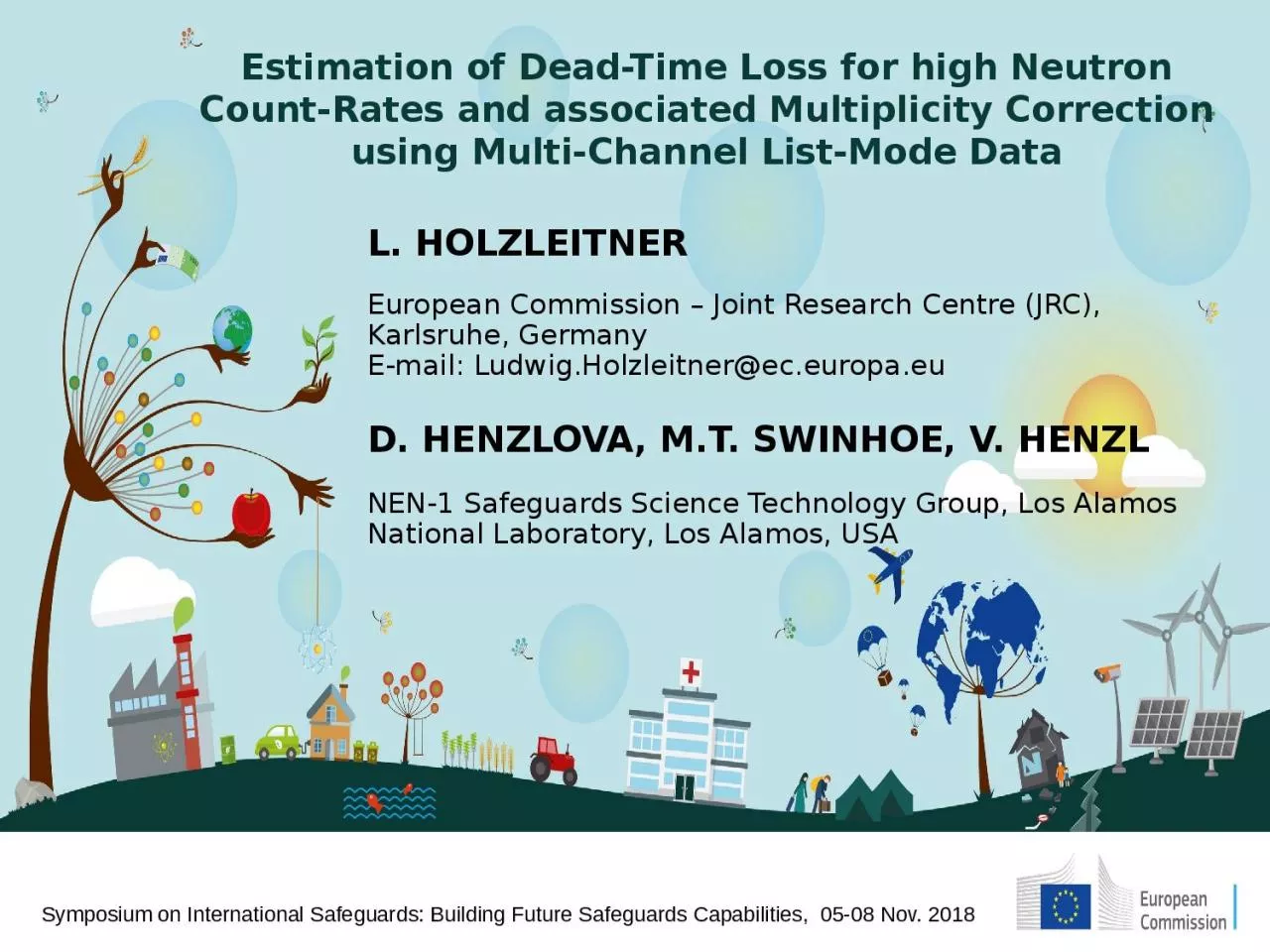

L HOLZLEITNER European Commission Joint Research Centre JRC Karlsruhe Germany Email LudwigHolzleitnereceuropaeu D HENZLOVA MT SWINHOE V HENZL NEN1 Safeguards Science Technology Group Los Alamos National Laboratory Los Alamos USA ID: 1031104
Download Presentation The PPT/PDF document "Estimation of Dead-Time Loss for high Ne..." is the property of its rightful owner. Permission is granted to download and print the materials on this web site for personal, non-commercial use only, and to display it on your personal computer provided you do not modify the materials and that you retain all copyright notices contained in the materials. By downloading content from our website, you accept the terms of this agreement.
1. Estimation of Dead-Time Loss for high Neutron Count-Rates and associated Multiplicity Correction using Multi-Channel List-Mode DataL. HOLZLEITNEREuropean Commission – Joint Research Centre (JRC), Karlsruhe, GermanyE-mail: Ludwig.Holzleitner@ec.europa.euD. HENZLOVA, M.T. SWINHOE, V. HENZL NEN-1 Safeguards Science Technology Group, Los Alamos National Laboratory, Los Alamos, USA
2. MC list-mode CounterMultiplicityEvaluation3He TubePreamplifierPolyethyleneSample cavityOfficeData-LinkTraditional neutron counters/detectors sum up the signals from different preamplifiers, possibly using a de-randomizer.Multi-channel list mode recorders provide both accurate time and channel information of recorded signals. Recording signals from individual preamplifiers using such devices provide additional possibilities for data analysis and other advantages. One of it is advanced dead-time correction as described here. A neutron detector in safeguards has a body of polyethylene with a cavity for the sample. Around it, gas proportional counters, often 3He tubes, are embedded in the polyethylene body. De-Randomizer replaced by Multi-Channel List-Mode recorderDetektor
3. (eqn.7)Dead-time loss can be estimated by repeatedly solving the matrix - eqn. 7 for evert time and for every meaningful (means non-zero) right hand second, estimated pulse train. Lost pulses on channels are estimated from observed ones on all other channels. This is done simultaneously (using matrix equat.) since probabilities of pulse arrival are interlinked! … global time of the detector … time at certain channels from a specific event (leading pulse) count is a observed pulse accounted for at channel i and time t. relative efficiency of channel i where of course . probability (betw. 0 - 1) for losing a pulse at channel has as time , time from the last recorded pulse on channel i.
4. Multiplicity histograms can be corrected by sorting-in lost pulses using statistical methods. This results in corrected Singles / Doubles / Triples. (a) Original count rate 0.52 M c/s (d) Original count rate 4.19 M c/s(c) Original count rate 2.09 M c/s(b) Original count rate 1.05 M c/sMCNP simulations show that the estimation of lost pulses is quite precise; The results for multiplicity correction by sorting-in of lost pulses are reasonable, however it still needs some refinement. Dead-time probabilities can be estimated using a iterative process involving eqn. 7.
5. Rossi-Alpha distribution first (4.5 µs) from MCNP simulationAdvantage over other methods: No prior calibration necessary: is self-calibrating from measurement data. Suitable for very high count-ratesTransfer of channel-information provides increased diagnostics capabilitiesCompensates for double pulsing is as long as it does not exceed dead-time loss. Double-pulsing correction could be built in future using a similar technique. Original count rate 1.05 M c/s:Using multi-channel list-mode recorders:
6. Questions?Thank you!Ludwig.Holzleitner@ec.europa.eu